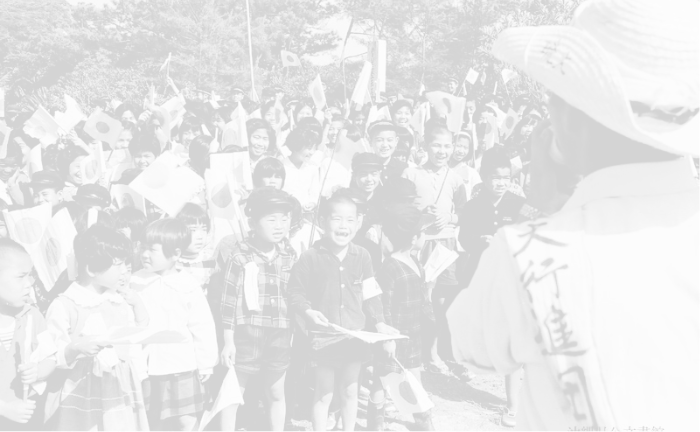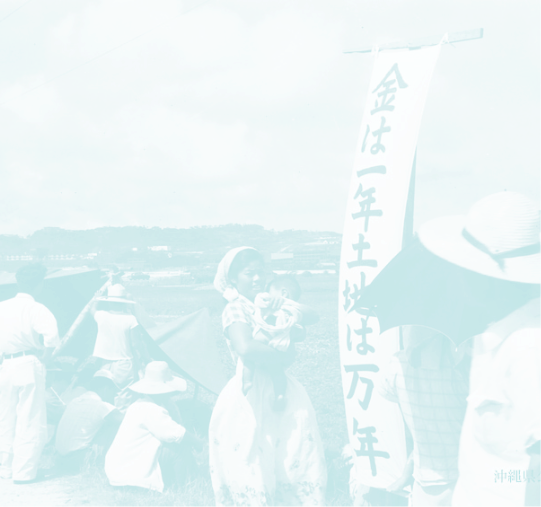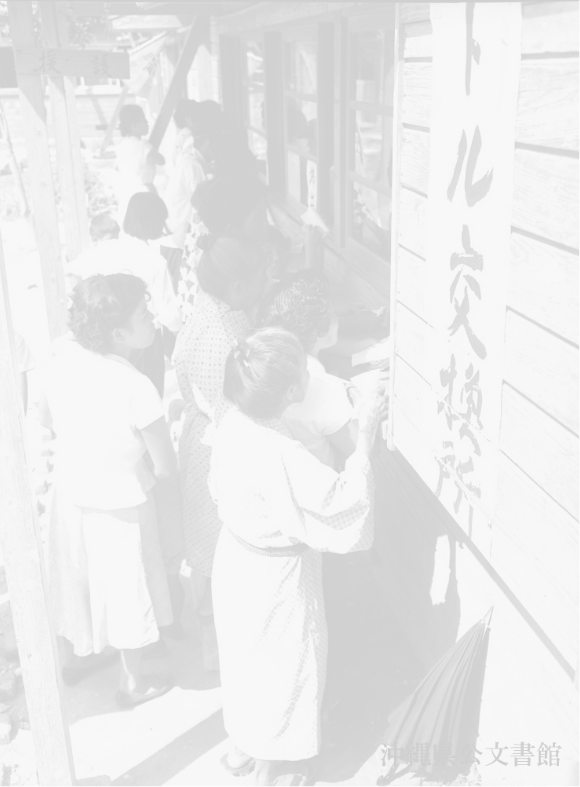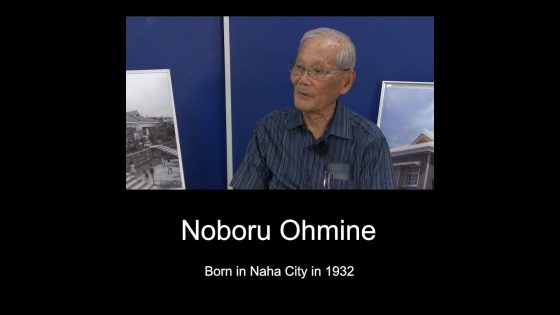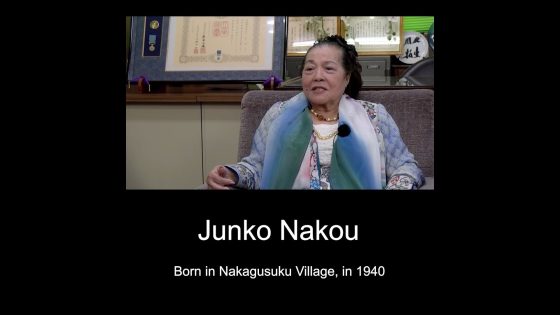
The Return of Okinawa as Seen by a Reporter
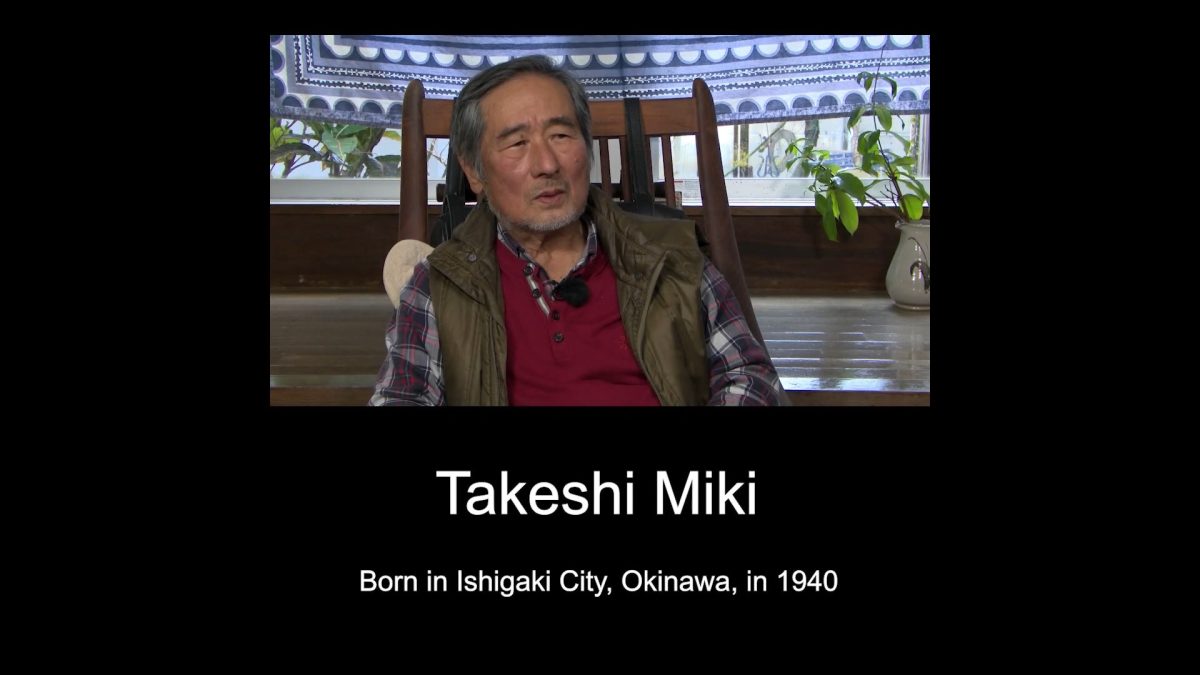

- Born in 1940
- Mr.Takeshi Miki
Timeline
| 1940 |
Born in Ishigaki City.
|
|
|---|---|---|
| 1955 |
Enrolled in Yaeyama High School and joined the Literature Club.
|
|
| 1959 |
Enrolled in the Faculty of Law at Meiji University. Joined the university's criticism magazine club, "Sundai Roncho. On the advice of a close friend, he also joined "Seiran," a self-published booklet of Okinawan students.
|
|
| 1960 |
Participated in a demonstration at the National Diet with members of the "Sundai Roncho" club against the revision of the Japan-U.S. Security Treaty.
|
|
| 1962 |
Joined the Social Thought Seminar of law school at Meiji University. Conducted research in Okinawa with several of his classmates and wrote a report entitled "Social Consciousness of the Postwar Generation in Okinawa.
|
|
| 1963 |
Transferred to the School of Political Science and Economics at Meiji University as a bachelor's student, and covered the first sea rally held on April 28 at the 27th parallel between Cape Hedo and Yoron Island, northern Okinawa Island.
|
|
| 1965 |
Graduated from the School of Political Science and Economics at Meiji University in March and joined the Ryukyu Shimpo in April. Assigned to the news department of the Tokyo bureau, he covered the Prime Minister's Office, the Prime Minister's Residence, the Diet and the Ministry of Foreign Affairs.
|
|
| 1968 |
Joined the Foreign Ministry's press club (Kasumi Club) and became its exclusive reporter for the first time. Using his interview notebook, he spent every Sunday writing down people's stories on manuscript paper.
|
|
| 1972 |
On May 15, Okinawa was returned to Japan. He covered the commemoration ceremony at the Nippon Budokan.
|
|
| 2000 |
Published "Restoration of Okinawa at the Negotiating" based on his notebooks and manuscripts from that time.
|
Story
Brief biography of the witness
From 1968 to 1969, when the negotiations for the reversion of Okinawa to Japan and the U.S. were in full swing, he covered the Japan-U.S. negotiations as a reporter for the Tokyo office of the Ryukyu Shimpo. He has been involved in many projects at Ryukyu Shimpo, serving as head of the political and economic department of the company's editorial office, then as director and chief of the editorial office, and later as managing director and executive vice president. He has also written many books on Okinawa's folk history and culture.
Postwar Yaeyama and high school life
The Scenery of Postwar Yaeyama
There was no US military base in Yaeyama. The head of the US military served as an administrator for the Yaeyama Civil Government. On the west side of Ishigaki Island, there was an official building called the Civil Administration Office. There were houses painted white, with nets and lawns, evoking an American feel.
The Yaeyama High School Literature Club
I joined the literature club because I liked reading and writing. The club members gathered just for discussions about books and reading. We published a school magazine called Gakuto once each year.
Protest Rallies Held at the School
I heard news of military land seizures on the main island of Okinawa. Even though there was no US military base in Yaeyama, I still had my concerns. The school, along with the student council, organized an assembly in the auditorium to discuss the military land issue. The teachers told us about the background and issues surrounding military land seizures. The members of the debate club passionately expressed their concerns.
Considering Democracy at the Ryukyu-America Cultural Center
I wasn’t particularly political as a student. I was just an optimist who liked creative writing and literature. In 1958, the Yaeyama Ryukyu-America Cultural Center opened near Yaeyama High School. There were four or five of these centers, across Miyako, Amami, and the main island of Okinawa, including one in Yaeyama. This facility was a pioneering hub for American social education, and people called it the “showcase of American democracy. “I went there often. I didn’t read difficult books, but I enjoyed reading American photo magazines like LIFE and TIME. I held the belief that America was a highly civilized society. This center served as a hub for American propaganda, offering books that upheld American democratic values. I read these books too. Maybe I was brainwashed into believing in the greatness of American democracy. This led me to ask questions like, “What is the United States, an advanced democratic nation, doing in Okinawa?” and “How does this align with America’s foundational principles and constitution? “When I went to college, I wrote an article titled “The American Founding Spirit and Okinawa, “and it ran in the Yaeyama Mainichi Shimbun. I wrote that America considers itself a democracy, but was currently carrying out military land seizures, and perpetrating various other wrongs, including sexual assaults. Was this kind of racial discrimination consistent with the spirit of the country’s founding? What was being done in Okinawa went against that spirit. I wrote that this was the current situation in Okinawa.
Thinking about Okinawa at a University in Tokyo
Thinking from an Okinawan Perspective at a University in Tokyo
When I entered Meiji University, I became a member of the Sundai Roncho magazine club, even though my studies were centered around law. I took part in publishing magazines through the club. This was around the time of the Anpo protests, and the university itself was on strike, so I was unable to attend classes. I spent my days in the club room, and frequently demonstrated at the National Diet. I wrote an essay for Sundai Roncho, expressing my discomfort with participating in the Anpo protests, because the protests were focused on Japanese safety, and I thought it was strange that Okinawa is not brought up at all. The title of the essay was “A Young Man’s Distrust of His Homeland. “In this piece, I deliberated on the Anpo protests from an Okinawan perspective. At first, there were various opinions within the school, with a limited awareness of Okinawa. At the time, I worked part-time as a private tutor for elementary school students. One day, while looking a map, the topic of Okinawa arose. The children asked, “Are there Japanese people in a place like this, too? “My mind went to a poem by Baku Yamanoguchi. I wanted to ask, “Don’t you see the Japanese person in front of you? “But I recognized that the children’s lack of awareness about Okinawa was due to its absence from school curricula and textbooks. I really couldn’t blame them.
Survey on the Attitudes of the Postwar Generation of Okinawans
In my fourth year of university, I traveled to Okinawa during summer vacation to conduct research. I was a member of a seminar focused on the history of social thought, led by Yujiro Nakamura, a philosophy professor. Together with five or six others from the seminar, I delved into our research on Okinawa. We conducted a survey of the attitudes of the post-war young generation in Okinawa. We reached out to various schools, distributing questionnaires to about 1,000 people. Then we analyzed and summarized the survey data, “Social Awareness in the Post-War Generation of Okinawans,” Compiled in College resulting in the publication of a report titled “Social Awareness in the Post-War Generation of Okinawans. “While creating the questionnaire, we studied the history of Okinawa, and researched the current situation of Okinawa and the military bases. Our collaborative effort fostered a shared understanding of Okinawa. At that time, the Okinawa Resource Center, established at the suggestion of English literature scholar and critic Yoshio Nakano, was located near the National Diet. I made good use of it, and as a thank-you for their services, I provided them a copy of our report. Nakano exhibited keen interest upon reviewing it. He incorporated the survey results from our report into various publications, including Sekai, writing about the awareness of Okinawa and the younger generation. This survey attracted attention from individuals passionate about Okinawa.
Choosing Journalism
In 1959, I came across two books that had a profound impact on me. One of them was La Revolución Cubana: Escritos y Discursos by Fidel Castro, the leader of the Cuban Revolution. Much like Okinawa, Cuba was an island known for growing sugar cane, run by dictators who did not grant the people the right to self-determination. This prompted Castro to spearhead a revolution, a move that both surprised and shocked me.
The other book was written by Yasuko Mizoue, a professor of home economics. She had initially taught at Shimane University, but was later invited for a brief stint at Ryukyu University. During her time in Okinawa, she explored the region extensively. After returning to Shimane, she published a book called The People of the Suffering Island. This documentary-style work profoundly moved me during my student days. It criticized the state of the Department of Home Economics at the University of the Ryukyus, emphasizing that no matter how much that department of the university made delicious dishes using American-style ingredients and utensils, it was irrelevant to Ryukyu University and the lives of ordinary people. Not the least bit helpful. She claimed only the university was satisfied with it, and asked if that was enough for the Department of Home Economics. The book covered things like this in great detail. Reading this book led me to introspection —I began questioning the purpose behind my own pursuit of law. I decided that I had to give back to Okinawa in some way through what I’d learned, and decided to fight using the pen, ultimately setting me on the path to becoming a newspaper reporter.
Students from Okinawa
Back then, students in Okinawa had various backgrounds. My best friend was enrolled at Waseda University, and together, we created our own independent magazine, with him at the helm. The magazine barely touched on political issues, perhaps because the people involved came from privileged backgrounds. Of all things, at one point I wrote a critique of the magazine, printed in the magazine itself. Seiran was its title. As Professor Mizoue pointed out in her book, we needed to reconsider our relationship with Okinawa, and where we stood. Around that time, the term “Okinawan Studies” began to be used for research on Okinawa. In a Seiran article titled “We Must Progress with New Okinawan Studies, “I emphasized the need for Okinawan Studies to serve as a catalyst for reform both within Okinawa and in broader society.
In 1963, the United Nations Human Rights Commission was held in Moshi, Africa. This assembly passed a resolution stating that US rule in Okinawa violates United Nations human rights. Despite the myriad perspectives surrounding Okinawa’s potential return to Japan, I thought that such a return wasn’t simply a matter of course due to a shared Japanese identity. Rather, I saw it as an opportunity to rectify the prevailing human rights issues in Okinawa, and if Okinawa’s return to Japan would be useful for that purpose, then that would be fine. To me, it was not an end in itself, but a means. So I was encouraged by international attention like the Human Rights Commission resolution. Also in 1963, I participated in the inaugural maritime rally held along the 27th parallel of latitude, which serves as an invisible border, running from Cape Hedo to Yoron Island.
Newspaper reporter on the front lines
Working at Ryukyu Shimpo’s Tokyo Bureau
I wanted to make use of what I had learned so far working in the Okinawan newspaper business. The Ryukyu Shimpo and Okinawa Times both had bureaus in Tokyo. The Ryukyu Shimpo was the first on the mainland to hold recruitment exams, and I was hired as a result.
I wore a lot of hats at first, handling all sorts of tasks. I also attended gatherings of fellow Okinawans. The Okinawa Special Regional Liaison Bureau, the government office in charge of Okinawa, was located in the Prime Minister’s Office, comprising three distinct sections. The director was Kokichi Yamano, a real character from Shimane. There was also a press club inside the Prime Minister’s Office. In the beginning, I was based there and conducted interviews. Near the Prime Minister’s Office, there was a unique entity called the Southern People Support Association, which later became the Okinawa Association. The chairman was Nobumoto Ohama, who served as the president of Waseda University, and the secretary general was Shien Yoshida, who worked at a government office in Okinawa before the war. Political parties had Okinawa special committees, and I visited political party officials. I also mainly interviewed mass movements with ties to Okinawa, gatherings of fellow Okinawans, and the Ryukyu Government Tokyo Office, which was a branch office of the Ryukyu Government. There were three or four public relations officers, who negotiated with various ministries. As Okinawa’s return to Japan approached, we interviewed various ministries. In preparation, specialized task offices were established, to examine where problems were and what was needed when connecting the systems for Okinawa’s return to Japan. It was quite difficult to go around there and conduct interviews. There were very few people in Tokyo branch, so I needed to be autonomous from the beginning. As Okinawa’s return to Japan approached, universities and academic societies did a lot of research on Okinawa. The Federation of Nine Societies was made of societies like the Japanese Ethnological Society and the Japanese Musical Society, and they sent a research team to Okinawa. I was in charge of cultural affairs because of my fondness for them.
Following Negotiations for Okinawa’s Return for an Okinawan Newspaper as a Special Case
Negotiations for the return of Okinawa gradually became more serious. The Foreign Ministry’s press club, nicknamed the Kasumi Club, consisted of major newspapers and television stations. But local newspapers like the Ryukyu Shimpo were denied membership. Kyodo News provided distribution to local newspapers. I thought it strange that Okinawan newspapers weren’t allowed to cover negotiations that would determine the fate of the Okinawan people. I met with the then-secretary of the Kasumi Club, from the Yomiuri Shimbun, and ultimately persuaded him to let us join the interviews. After that, I started covering the return negotiations at the Ministry of Foreign Affairs.
The Minister of Foreign Affairs also wanted to know about Okinawa, so he was very interested in what I had to say. The return of Okinawa raised a key question: should it occur with or without nuclear weapons? The ambassador to the United States was one Mr. Shimoda, and whenever he returned to Tokyo, he said, “America will not agree to an agreement unless it includes nuclear weapons. “I once said to Foreign Minister Miki, “If only Okinawa is returned with nuclear weapons, there will be riots. “He said, “You know riots aren’t peaceful, “but in fact, there was a riot (the Koza Riot) in 1970. Because of that, he was interested in having reporters from Okinawa like me. Foreign Minister Miki said he wanted to return Okinawa to Japan, but there was a trick to it. He said that the policy for negotiating the return of Okinawa was not yet planned, but he tried to get public opinion to oppose the inclusion of nuclear weapons. In the end, the return to Japan was granted, but with a number of loopholes. In my opinion, it was one thing to formally apply the Japan-US Security Treaty, but another thing entirely to organize and downsize US military bases or to revise the Status of Forces Agreement. I get the impression that we were fooled by these formalities. That’s why a lot of problems are arising now.
Reporting from the Front Lines
After all, I had a lot to say about Okinawa. So I thought that I had to cover everything, even things that weren’t special. I felt shut out from the Ministry of Foreign Affairs. I couldn’t really get an idea of what they were thinking, different from other government offices. They were difficult to interview, possibly because of the diplomatic issues involved.
Compiling a Record of His Own Coverage
There were limits on how many interview articles could be sent to the head office. Even if I wanted to write more, I couldn’t send them. The negotiations that took place in 1968 and 1969, culminating in the official decision to return Okinawa, marked a profoundly significant historical moment. During that time, I recorded what I saw and heard in my notebooks. I may be the only Okinawan who knew that information. I thought that this needed to be documented for future generations, even if not in a newspaper. The notebooks were only about this big. Notebooks from the Time-based on that, every Sunday, I copied the stories I covered that week onto writing paper. I tried to record as much as I could about the people and the details of the negotiations, if only the main points, and continued doing so as though keeping a journal. That record grew over time. Eventually, Okinawa was returned to Japan, and I left Tokyo for Naha, and forgot about my journaling. One day, however, Masaaki Gabe, an international politics researcher at the University of the Ryukyus, came to visit and said he was researching the Okinawa return negotiations, so I lent him my notebooks for reference. He was very surprised when he read them, and said, “These should be made into a book and shared with lots of researchers. “That led to the book Restoration of Okinawa at the Negotiating. It’s been about 30 years since I recorded that interview, but I’m glad it’s still there as a record.
What Is a Journalist?
What Is a Journalist?
I think journalists are destined to play a role in helping and empowering the oppressed, and those whose wishes have gone unfulfilled. So when writing articles, it is important to believe that we speak for these people, working to change the world for the better. I believe that journalists must believe this from the start. Journalists should ask themselves the question, “What am I writing for?”
Message to Younger Generations
I want younger generations to experience various things, and figure out which path to take, while following their feelings.
